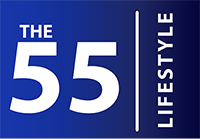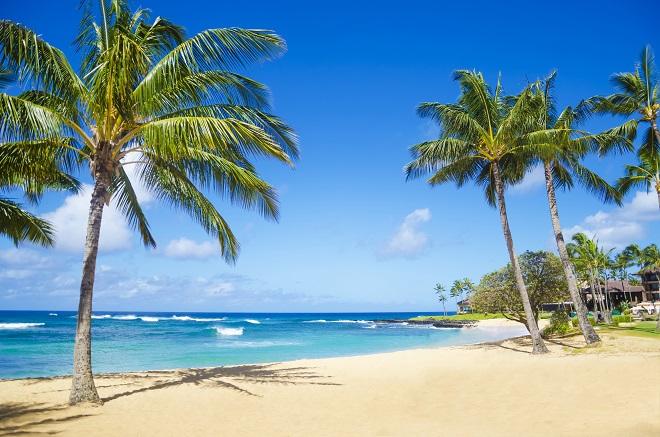In our continuing wine series, we now stop by one of the most historical and legendary regions, if not the preeminent wine locations on the planet; Bordeaux, France. Established some 2,000 years ago during the occupation of Gaul, the first vineyards were planted to satiate the demands of Roman soldiers. (It’s speculated the original cuttings came from the Rioja region of Spain, but that’s not proven.) Bordeaux produces on average 70 million cases or more annually that ranges from everyday table wines to some of the most prestigious and expensive in the world.
Background and Key Points to Know About Bordeaux
Bordeaux is located on the Atlantic coast of France, roughly 350 miles southwest of Paris. It’s comprised of predominant appellations and fifty to sixty Chateaux (vineyards) over 300,000 acres. The area is renowned for its mild and temperate climate and ideal soil conditions for vines, along with the proximity to the Gironde estuary and its two major tributaries; the Garonne and Dordogne. These waterways are a significant feature to a term you should be familiar with when discussing Bordeaux: Left Bank and Right Bank.


Left and Right Bank identifiers are just that – locations of appellations and their sub-region Chateaux in relation to which side of the riverbank they reside. Left Bank refers to the Chateaux along the left side of the Gironde and Garonne rivers and Right Bank refers to the Chateaux along the right side of the Gironde and Dordogne rivers. There is another distinction, the Entre-deaux-Mers which refers to the region between the Garonne and the Dordogne rivers.
There are five distinct and major appellations, or defined and controlled regions, four of which are governed by the Appellation d’origine controlee or the French certifying body. They are:
Left Bank: Medoc and Graves.
Right Bank: Libournais, Bourg and Blaye.
The Entre-deaux-Mers: the land between the Garonne and the Dordogne rivers.
Varietals and Wine Production
Bordeaux can produce red, white, dessert, rose and sparkling wines.
Reds
- Merlot, Cabernet Franc, Cabernet Sauvignon, Petit Verdot are the major red varietals, with Merlot being the most planted. Carmenere and Malbec are also planted but are considered minor grapes.
- Alcohol content for reds can range from 12.5% to 15% depending on producer and vintage.
- Red wines are oak-aged for 18-24 months, also depending on the producer and vintage. Producers typically use a mixture of new and used French oak, but the well-known producers use new French oak exclusively.
- Left Bank is planted to predominantly Cabernet Sauvignon with plantings of Merlot Cabernet Franc and Petit Verdot
- Right Bank is planted to predominantly Merlot with plantings of Cabernet Sauvignon, Cabernet Franc and Petit Verdot.
Whites
- The Bordeaux region is known for producing both sweet and dry white wines with the sweet wines mainly coming from Sauternes and Barsac.
- Sauvignon Blanc, Semillion (the most planted) and Muscadelle are the major white varietals, but Sauvignon Gris (a pink variation of Sauvignon Blanc) is allowed.
- Alcohol content for whites can range from 11% to 14% depending on producer and vintage.
- White wines may or may not see oak aging.
The Wine Itself
Admittedly, Bordeaux can be a challenging region to understand, but there is a style for just about everybody and fortunately the labels will tell you most everything on the wine. It can tell you the producer, the region/AOC it is from, and the vintage. The only thing a label may not tell you is the varietals used. For an example, click the linked image below to see a French label from our Pinterest post.
Bordeaux is typically a blend, or a mixture from different grapes, but there are some single varietal reds and whites available. Rose wines are produced as well but it is not a major style.
Red Wine
- Red Bordeaux can be made in a less expensive and softer more fruit forward style. As you move up in price, you typically see wines that become richer, heavier and more tannic overall.
- The more Merlot dominant wines tend to be softer and more approachable while the Cabernet Sauvignon dominant wines tend to be heavier and more tannic. In general, the more tannic the wine the longer it needs to be decanted or cellared.
- Typically features blackberry, blackcurrant and plum flavors. The more complex reds can show notes of smoke, tobacco leaf, cedar, spicebox and stone/mineral notes.
- Certain red wines can age for upwards of 60 years or longer.
White Wine
- White Bordeaux takes a similar approach; it can be made in a less expensive, more everyday style or in a richer, more complex quality.
- As you move up in price point, you will see wines with more layers and complexities of flavor, higher acidity and possibly oak influence.
- The single varietal Sauvignon Blanc or Sauvignon Blanc dominant whites will be grassier with more grapefruit notes. Semillion and Muscadelle is used to help round out the Sauvignon Blanc and will give it more honeyed notes.
- A few white wines can age for 5-10 years
Dessert Wines
- Sauternes and Barsac are some of the most famous dessert wines in the world.
- Typically viscous and very sweet with tropical flavors, such as pineapple.
- High acidity helps balance out the incredible sweetness.
- It is incredibly difficult to produce and requires perfect conditions and humidity so the Botrytis fungus can grow.
- Sugar content gives these wines a near indefinite lifespan in a cellar
Food Pairing
Reds
- Hearty meats and stews are the best pairings. Examples can include Beef Wellington to Beef Stew to a well-marbled steak cut. Lamb, especially Braised Lamb Shanks go well with Bordeaux.
Whites
- Lighter fair such as seafood or shellfish (Mussels, Lobster Bisque, Smoked Salmon), Quiche, soups and vegetable dishes.
Sauternes and Barsac
- Rich desserts, fruits and cheese, Creme Brulee, Cantaloupe, Roquefort, Stilton, Foie Gras.
Producers
Red Wines
- Entry Level
- Mouton-Cadet
- Chateau Bois Redon
- Chateau Bois Chantant
- Chateau De Camarsac
- Chateau Roquevielle
- Mid-Level
- Chateau Feret-Lambert
- Chateau Lanessan Haut Medoc
- Chateau Pibran
- Chateau Vrai Canon Bouche
- Chateau de la Huste
- High End/Growths
- 1st Growth
- Chateau Mouton Rothschild
- Chateau Latour
- Chateau Haut-Brion
- Chateau Margaux
- Chateau Lafite Rothschild
- 2nd Growth
- Chateau Brane Cantenac
- Chateau Ducru Beaucaillou
- Chateau Leoville-Barton
- Chateau Leoville-La Cases
- Chateau Cos d’Estournel
- 1st Growth
- 3rd Growth
- Chateau Palmer
- Chateau Lagrange
- Chateau Kirwan
- Chateau Giscours
- Chateau Langoa-Barton
- 4th Growth
- Chateau Talbot
- Chateau Brainaire-Ducru
- Chateau Duhart-Milon
- Chateau Prieure-Lichine
- Chateau Beycheville
- 5th Growth
- Chateau Clerc Milon
- Chateau Dauzac
- Chateau Lynch-Bages
- Chateau Cantemerle
- Chateau d’Armailhac
- Petrus
- Le Pin
- Chateau Cheval Blanc
White Wines
- Entry Level
- Chateau Palene
- Chateau Haut Guibon
- Rothschild Blanc
- Chateau Tour de Bonnet
- Chateau Montet
- Mid-Level
- Chateau Cote Monpezat Compostelle
- Chateau Coucheroy
- Chateau Clos Floridene
- Chateau Doisy-Daene
- Chateau Couhins Blanc
- High End
- Petit Cheval Blanc White
- Chateau La Louviere Blanc
- Chateau Carbonnieux Blanc
- Chateau Haut Bergey Blanc
- Chateau La Mission Haut-Brion Blanc
Sauternes and Barsac
- Entry Level
- Chateau Miselle
- Pavois d’Or
- Chateau Filhot Gold Reserve
- Chateau du Grand Carretey
- Esquisse de Nairac
- Mid-Level
- Chateau Cantegril
- Symphonie de Haut-Peyraguey
- Les Cypres de Climens
- Chateau Doisy-Vedrines DV
- Les Carmes de Rieussec
- High End/Growths
- Superior 1st Growth
- Chateau d’Yquem
- 1st Growth
- Chateau Rieussec
- Chateau Climens
- Chateau Guiraud
- Chateau Suduiraut
- Chateau Coutet
- Superior 1st Growth
- 2nd Growth
- Chateau Doisy Daene
- Chateau Doisy-Vedrines
- Chateau Filhot
- Chateau Nairac
- Chateau Caillou
We hope that you find this information helpful in your search for a Bordeaux of your liking as the style has quite a lot to offer! But remember, the best fit for any wine is one that doesn’t necessarily come from a rating, but rather one that suits your tastes.
Please feel free to follow our Amazon Affiliate links below for select related products available in their site.
Sources used in the Bordeaux blog:
The 55 Lifestyle is a participant in the Amazon Services LLC Associates Program, an affiliate advertising program designed to provide a means for sites to earn advertising fees by advertising and linking to Amazon.com.








